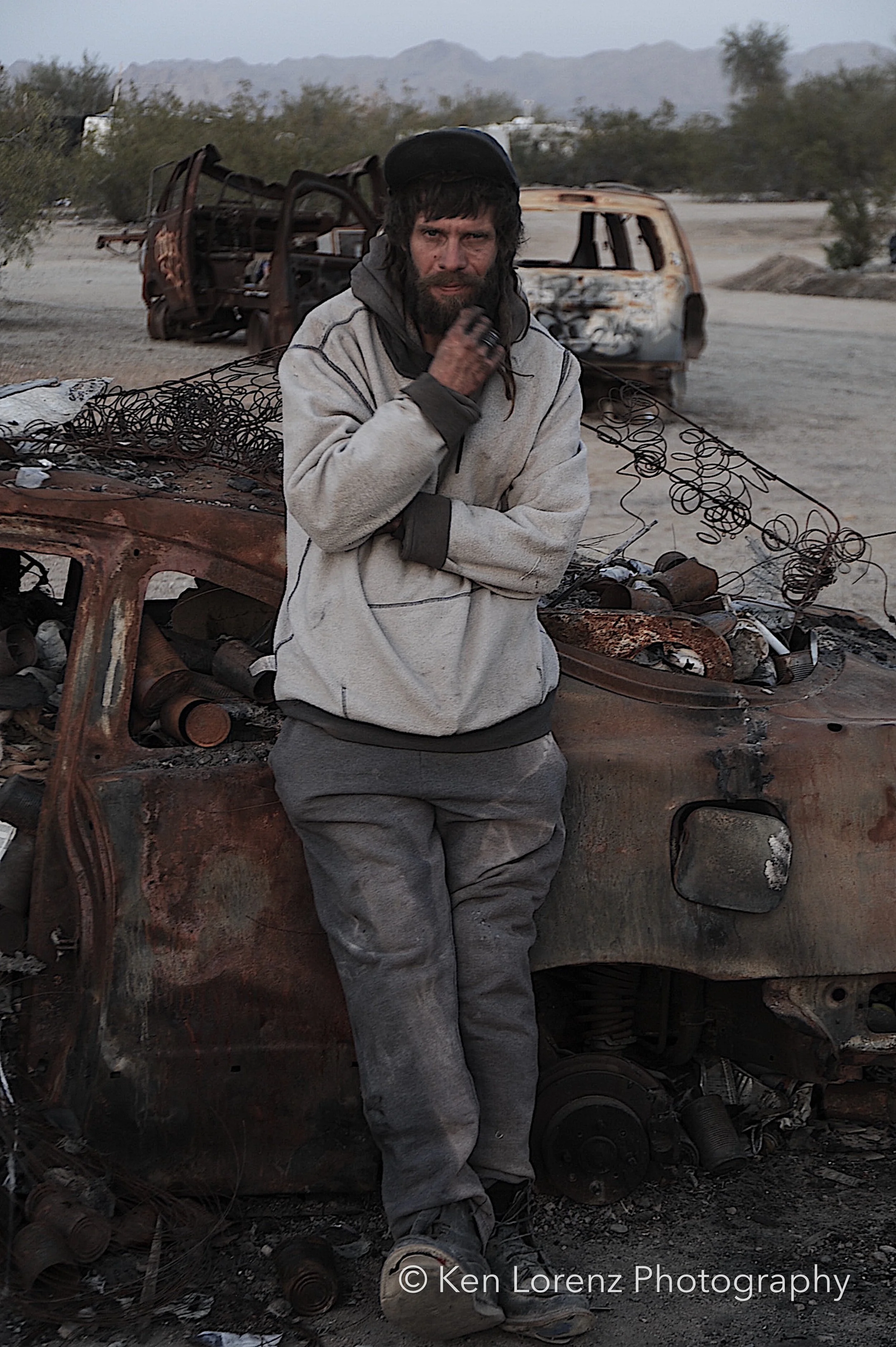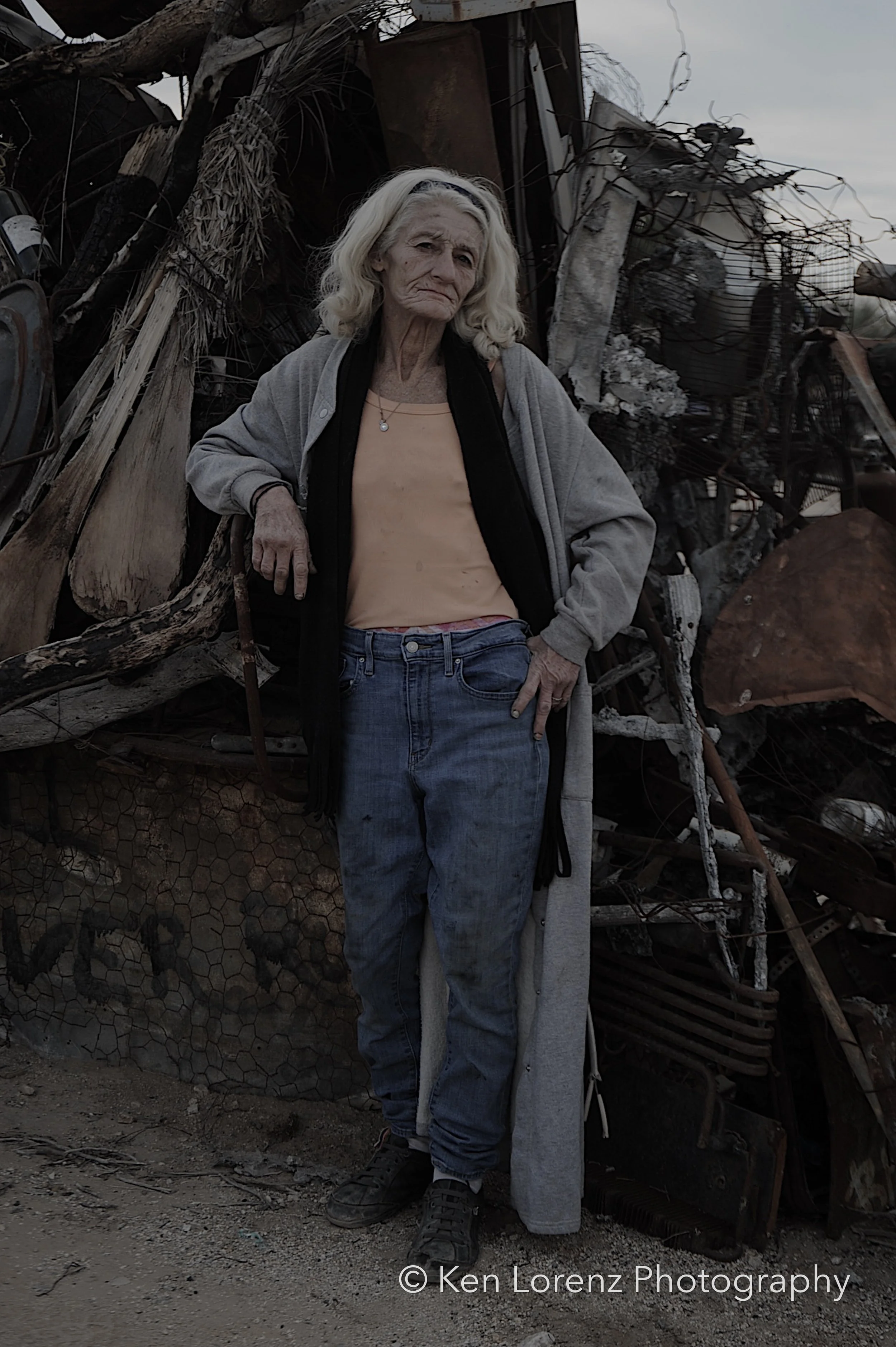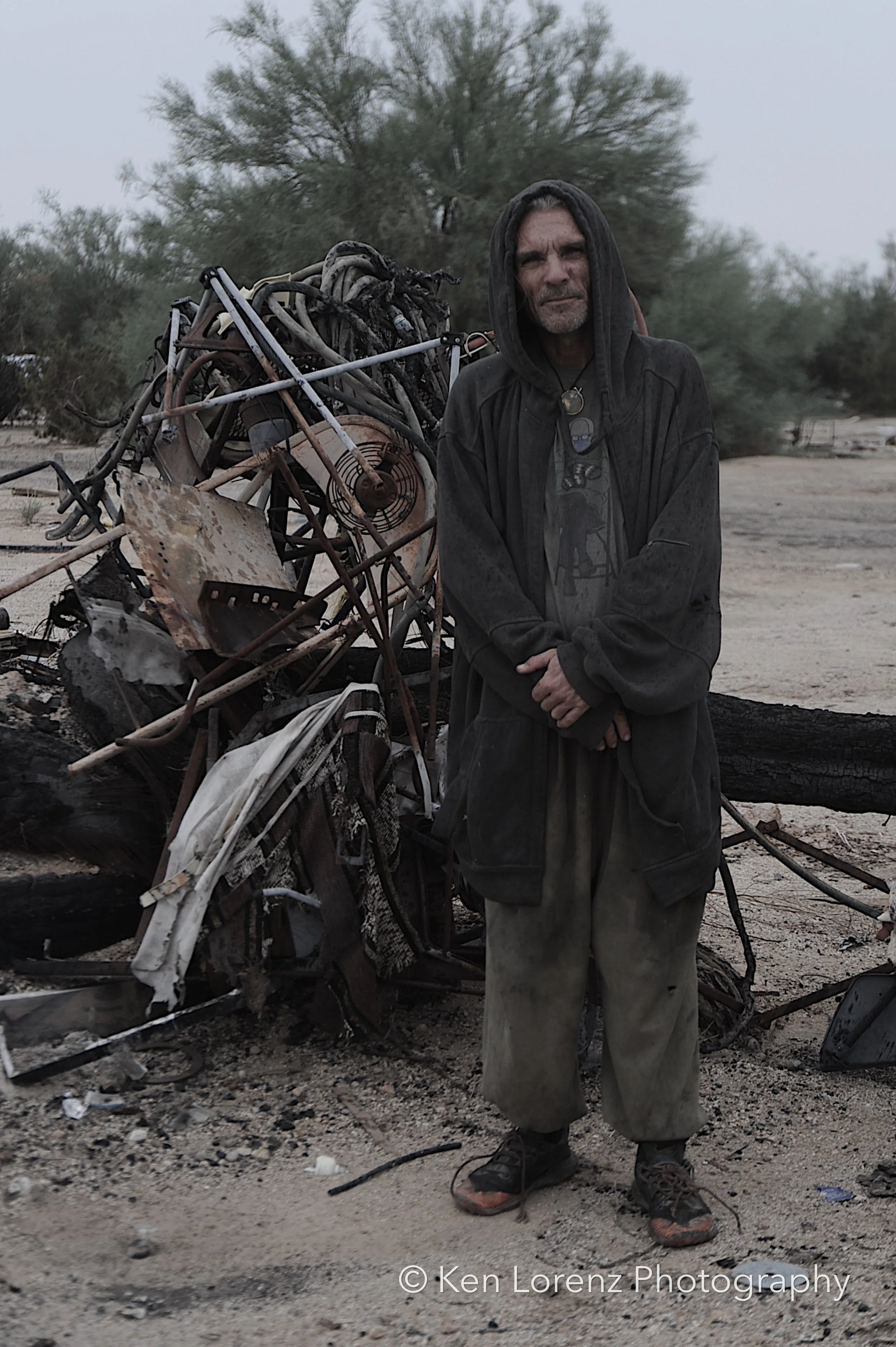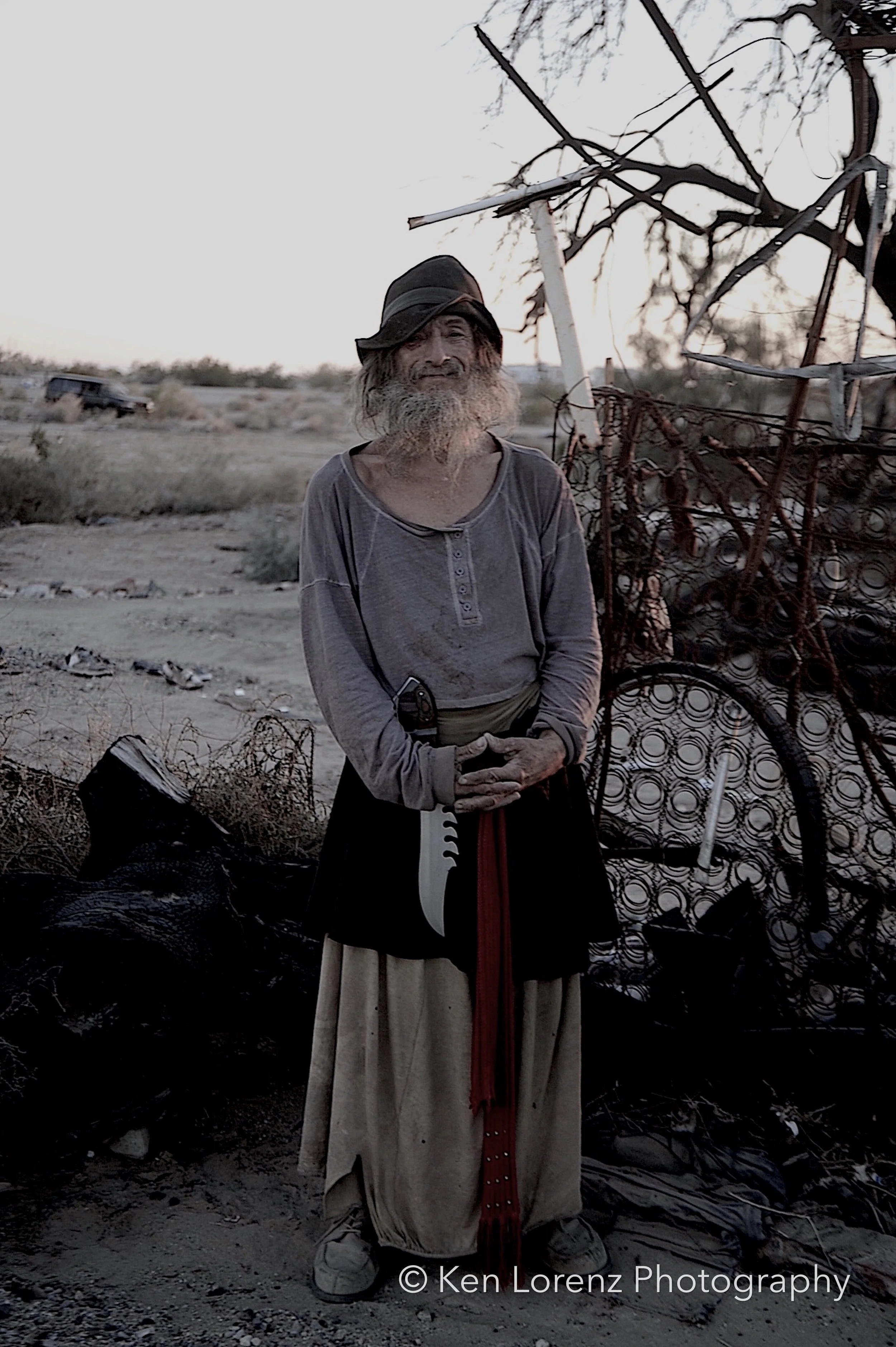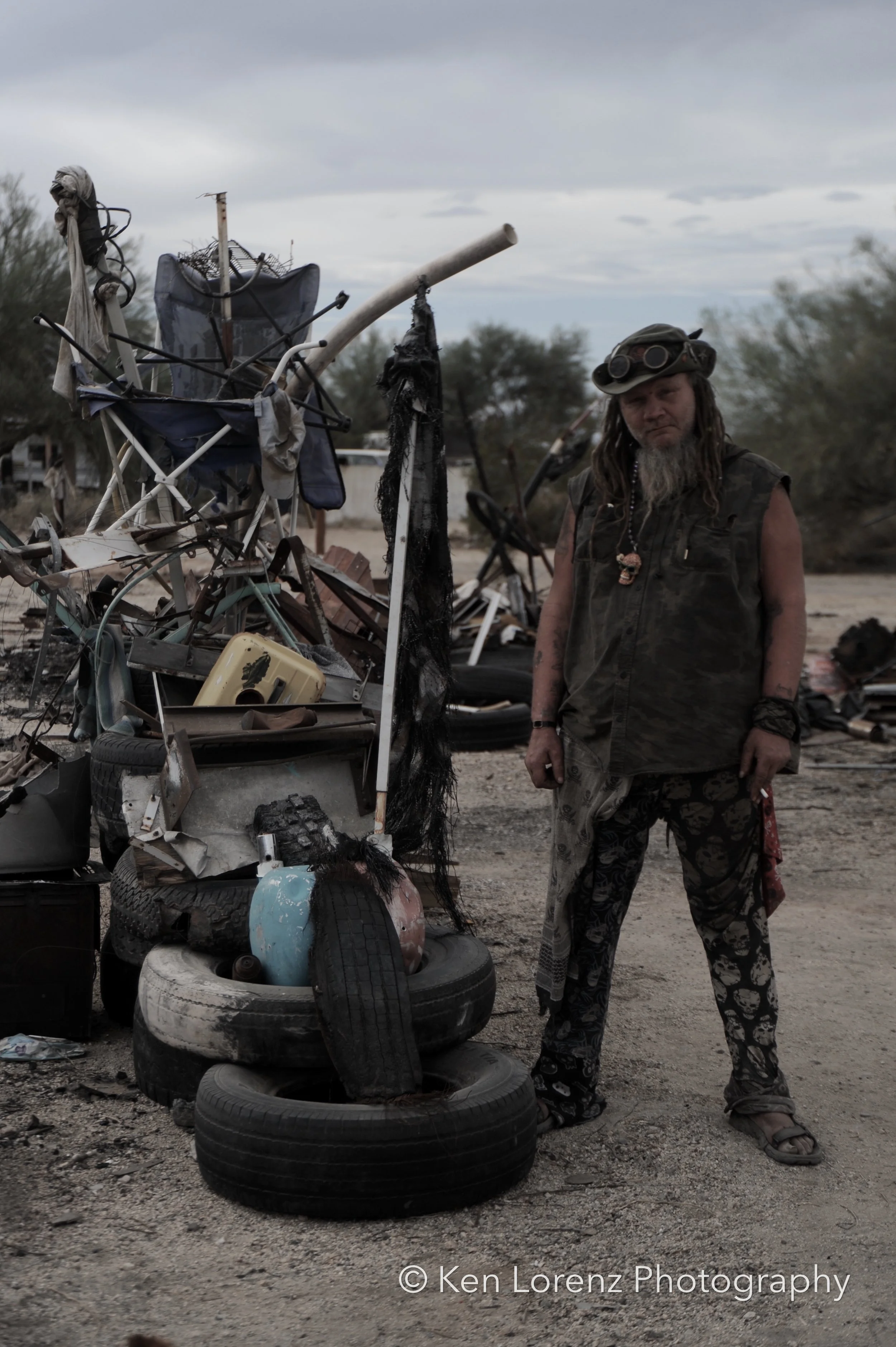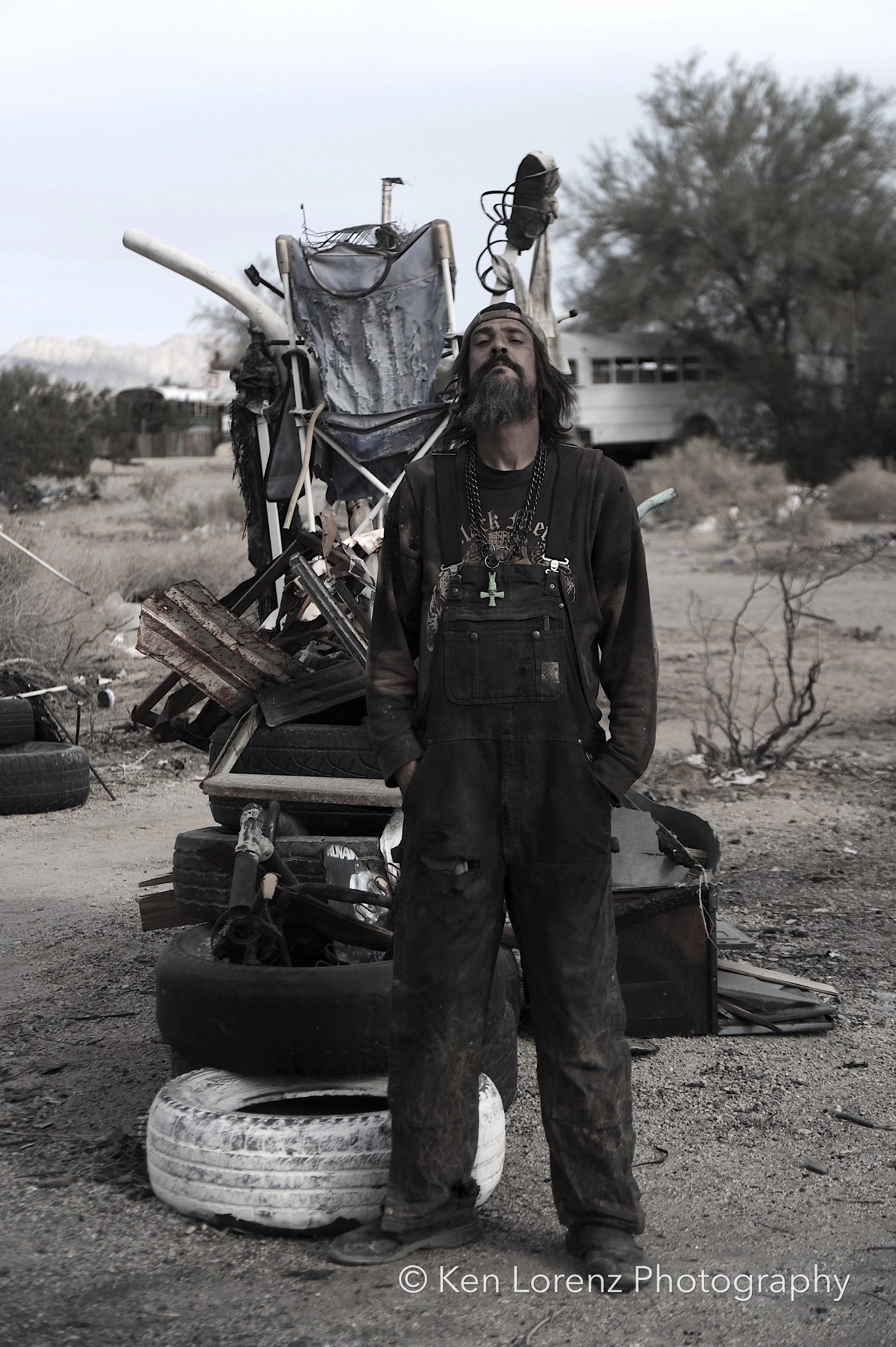Junk
ART OF THE ART INSTALLATION
ART OF THE ART INSTALLATION
6 images of an on-going portfolio.
Discarded items—more commonly known as trash or junk—litter the desert floor of the Sonoran Desert, where Slab City (better known simply as The Slabs) is located. But this debris, scattered across miles of barren land, doesn’t simply rust away, disintegrate, or vanish under the desert sun. Instead, it transforms into possibility—raw material for art installations.
By definition, an installation is a form of art—large or small—that transforms a space into a unified artistic experience. Artists often use a mix of traditional and non-traditional materials. But at The Slabs, it’s the non-traditional that reigns supreme: the trash and junk are the very essence of the space, and thus, of the art itself.
Key Qualities of an Installation:
Site-specificity: Installations are created for a specific location. Here, the dusty, sun-scorched slab grounds serve as both canvas and gallery.
Interactivity: Built under open skies, slab installations invite viewers not just to observe, but to engage—to walk through, around, and even within the art.
Mixed media: With an endless supply of discarded materials available across thousands of open acres, the creative potential is virtually limitless.
Spatial awareness: Many installations feature thoughtful, even architectural design—planned layouts that guide the viewer’s movement and attention.
Visitors to Slab City are no doubt familiar with East Jesus, a museum-like installation space on the eastern edge of The Slabs. Alongside original pieces by resident artists, the site also hosts works transported from the iconic Burning Man festival in Nevada.
These open-air installations are sometimes referred to as “environments”—because, much like at East Jesus, spectators aren’t just looking at the art—they’re walking through it. This immersive quality allows for deeper, more personal engagement with the work. Art, after all, is often deeply personal and inherently unanalyzable. Here, the fact that installations invite visitors to get up close—sometimes even touch or interact—is part of what makes them so liberating.
This photographic series captures portraits of artists standing before their creations—an homage to the raw power of creativity and the imagination that thrives in one of the most unexpected of places.
